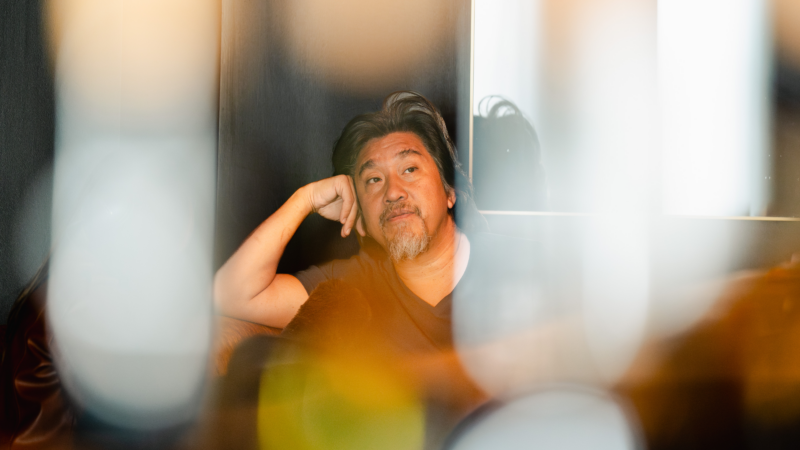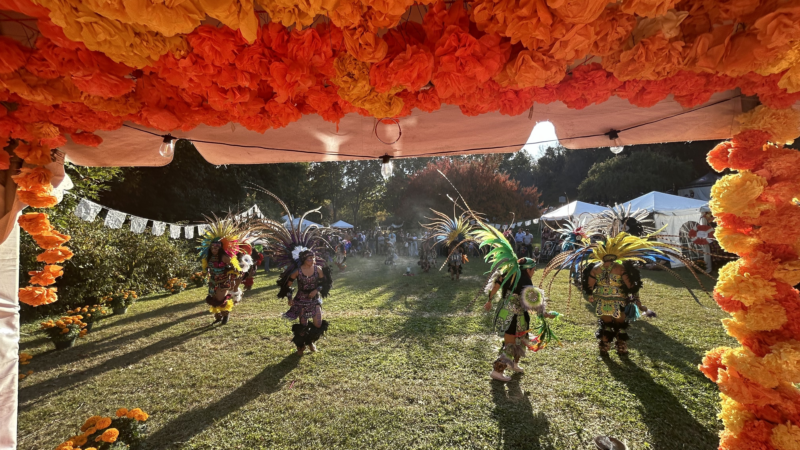Here’s why we’re disappointed with ‘Here’: It’s more complicated than it is good

The marketing of the film Here has heavily emphasized its status as a Forrest Gump reunion for Tom Hanks, Robin Wright and director Robert Zemeckis. (The script is also from Gump screenwriters Zemeckis and Eric Roth.) Whether or not a Forrest Gump reunion was something people were looking for 30 years after the fact, Here does have a lot in common with its predecessor, including the sense that it’s sometimes more tricky — both technically and narratively — than good.
Based on a graphic novel by Richard McGuire, Here is filmed from one single point of view: the corner of a living room somewhere in the United States. (Presumably somewhere in the mid-Atlantic, for reasons that relate to Benjamin Franklin. It’s a long story. Literally.) The core of the film is the relationship between Richard (Hanks) and Margaret (Wright), whom we meet as teenagers as they’re falling in love and then follow all the way until they’re 80.
But on top of their story, Here also shows vignettes of other lives in the house over time: there’s Richard’s parents, along with the people who lived there in the earliest part of the 20th century, a couple in the 1920s, and even a family during COVID-19 after Richard and Margaret have left. Moreover, we see the view from the same spot before the house was even built, when a couple billed only as Indigenous Man and Indigenous Woman had warm moments there. (And when dinosaurs were there, and during colonial times, and yes, this is where Ben Franklin enters into it.)
In order to cram all of this into a movie that’s only a little over an hour and a half long, the scenes are very short — the ones I timed in my head while watching seemed to be largely in the 30 to 45 second range, though some are longer (especially the ones with monologues) and some are shorter. The result is a very long montage with an admirable thesis: In an ordinary house, all kinds of extraordinary things happen. People are born and they die, they fall in love and out of love, they have ideas and make art, and they experience important moments along with the rest of the world.
The film goes astray specifically because it suggests the house is extraordinary rather than ordinary.
What’s strange is that the film goes astray specifically because it suggests the house is extraordinary rather than ordinary. It figured in colonial history, it has an important artifact buried in the backyard, and in a very charmingly acted but very corny touch, it was the place where an important invention was … invented. It didn’t need these things, really. The families are enough, and that should have been the point.
Visually, the level of experimentation Zemeckis uses is impressive — one technique uses inset boxes almost like windows in an advent calendar, where a box appears and you see through that scene to another one. So, for instance, you’re watching a scene set in 1980, but a box opens and shows you the fireplace in 1940. And to even figure out how to film like this, how to manage depth of field and focus, has to have been a gargantuan task. (I think I’d be more interested in a documentary about how they made Here than I was in Here.)
Unfortunately, the underlying story has trouble getting going because of how busy the movie is. Wright does an admirable job giving Margaret a real personality with a relatively modest amount of screen time, but it’s not clear who many of the other characters, including Richard, really are.
Also, the Indigenous Man and Indigenous Woman business, while certainly a reasonable effort to acknowledge that the history of a place does not equal the history of a house, feels perfunctory and underdeveloped. The Black family we see living in the house in 2020 fares perhaps even worse, limited to worrying about COVID and giving their son “the talk” about dealing with the police. It’s not that they shouldn’t have included these things, but it’s sad that those are very nearly the only on-screen moments the family has. In a crowded movie like Here, some things were always likely to get short shrift — almost everything does. But these things have a particular sting.
It’s not a good movie, unfortunately. But as NPR film critic Bob Mondello pointed out, it’s interesting to see long-time directors like Zemeckis attempt to pull their entire filmmaking philosophies into these late-career projects, trying to make sure that what they want to say gets said. That might be more poignant and more pointed about mortality and meaning, in fact, than anything in the movie itself.
This piece also appeared in NPR’s Pop Culture Happy Hour newsletter. Sign up for the newsletter so you don’t miss the next one, plus get weekly recommendations about what’s making us happy.
Listen to Pop Culture Happy Hour on Apple Podcasts and Spotify.
Satellite images show the devastation from Spain’s deadly floods
The images show a devastating transformation of eastern Spain, where at least 205 people have been killed by flash floods.
U.K. Conservatives pick Kemi Badenoch as their party’s new leader
The party elected Kemi Badenoch as its new leader as it tries to rebound from a crushing defeat that ended 14 years in power. She is the first Black woman to lead a major British political party.
Chef Edward Lee reflects on ‘Culinary Class Wars’, identity and his next chapter
After three decades in Southern cuisine, Lee's next culinary chapter explores Korean American cooking, moving beyond traditional recipes and fusion concepts.
Iran’s supreme leader threatens Israel, U.S. with ‘crushing response’ to Israeli attack
Iran's supreme leader threatened Israel and the U.S. with “a crushing response” over attacks on Iran and its allies. The Pentagon said Friday that more U.S. forces would be coming to the region.
Sikhs march across California urging protections against threats from India on U.S. soil
Sikh activists marched 350 miles across California in October to mark the 40th anniversary of a massacre and call for protections from what they say is a growing threat from the Indian government.
At a historic cemetery in the South, a Dia de los Muertos festival takes root
At a historic Southern cemetery, a Mexican tradition has found a home.




